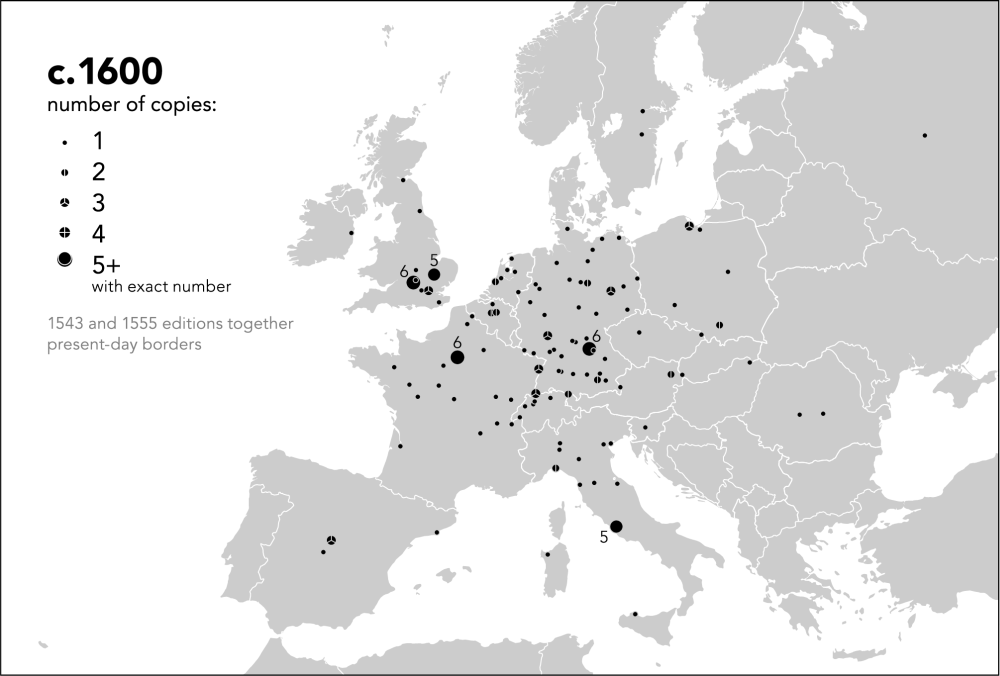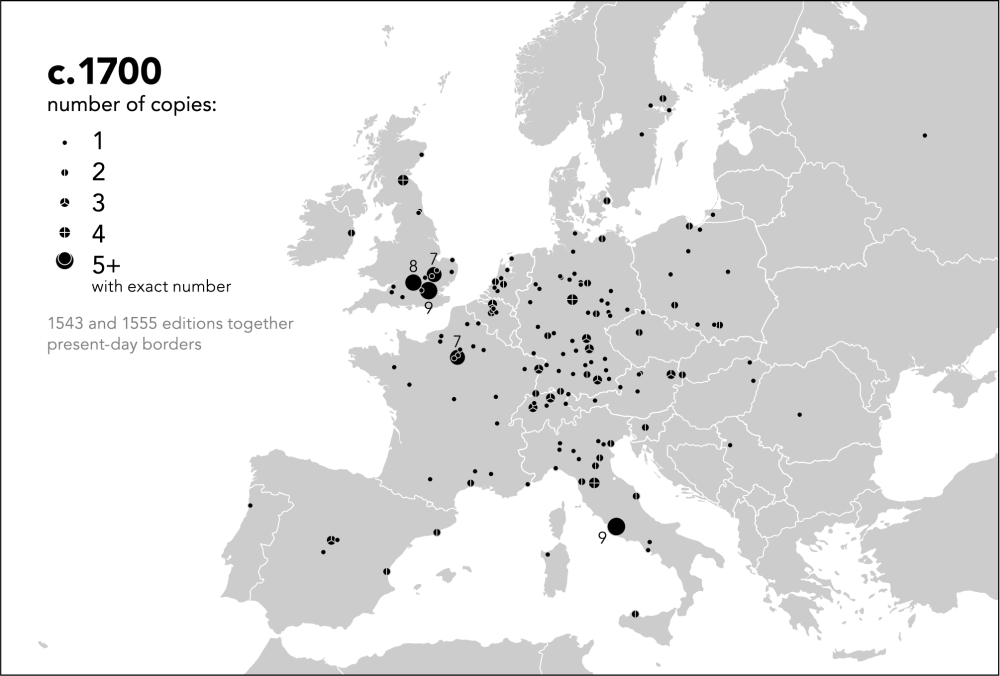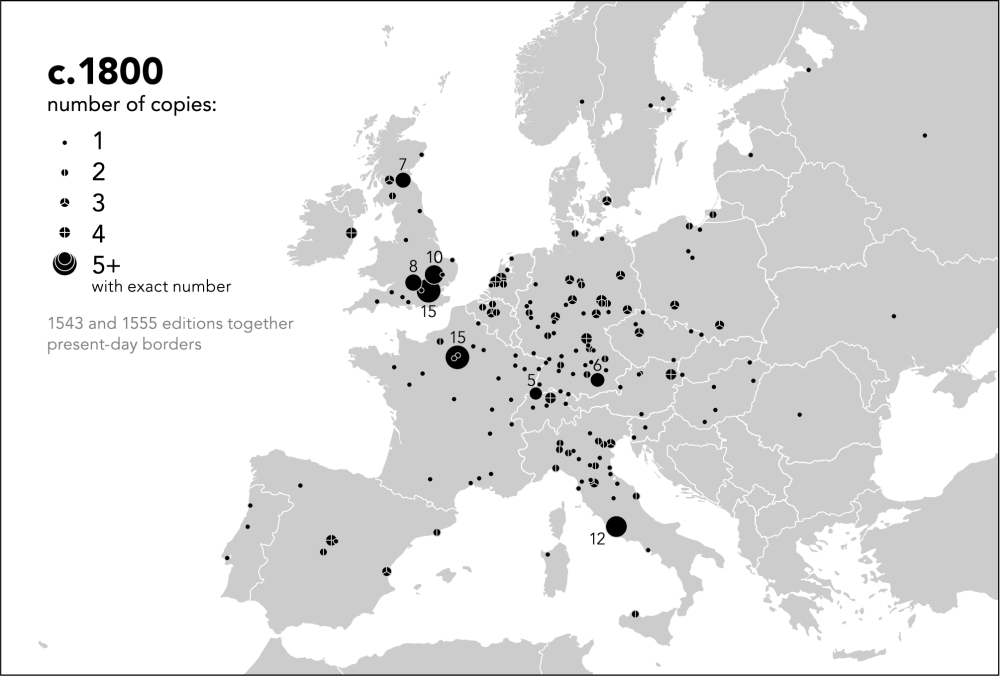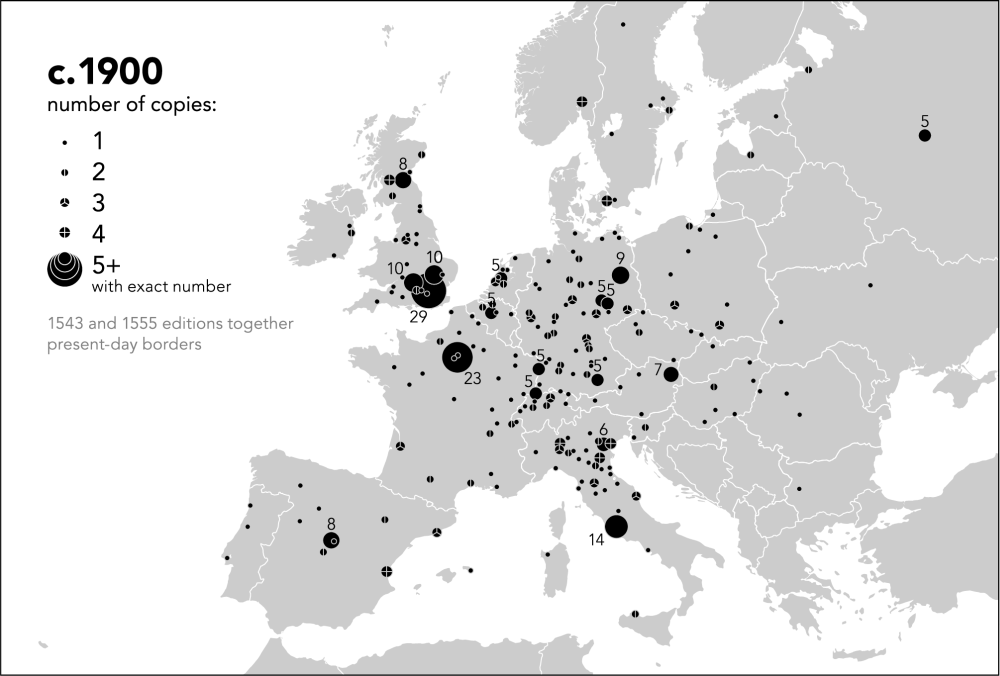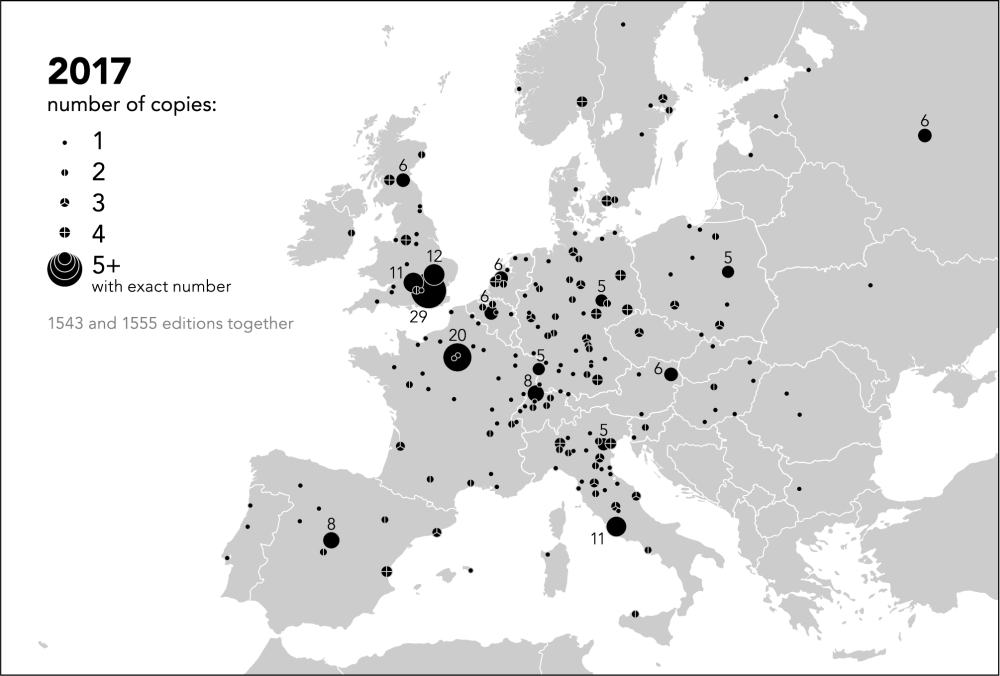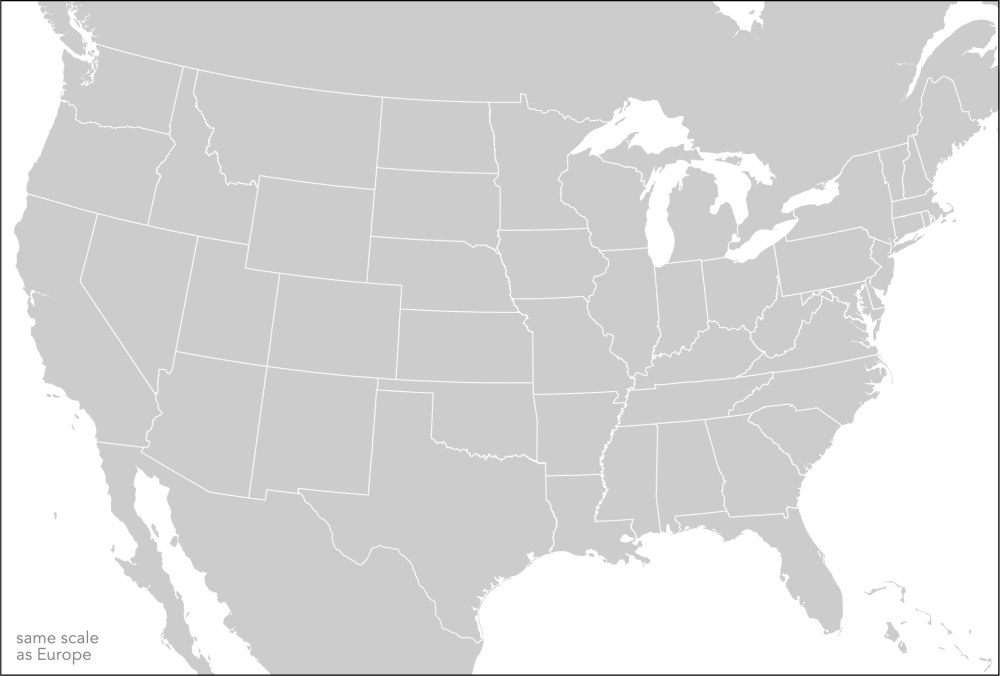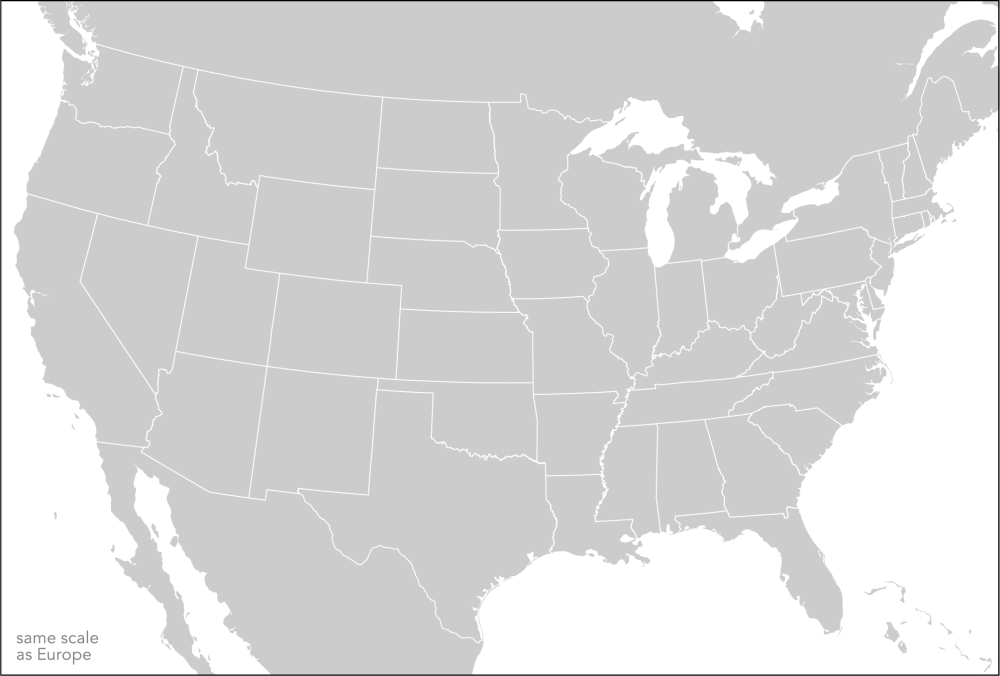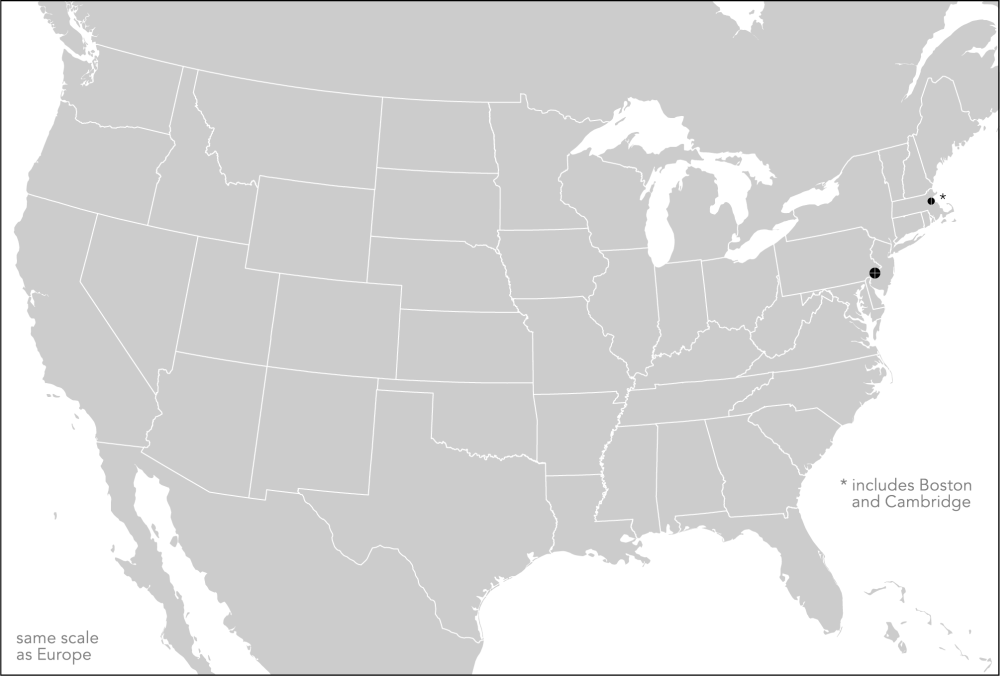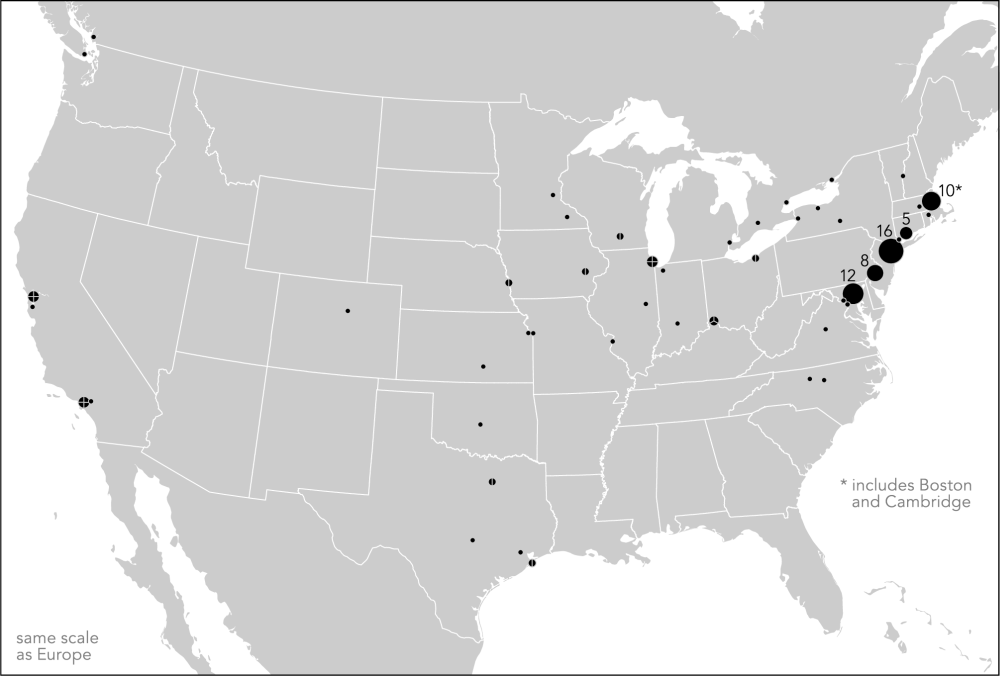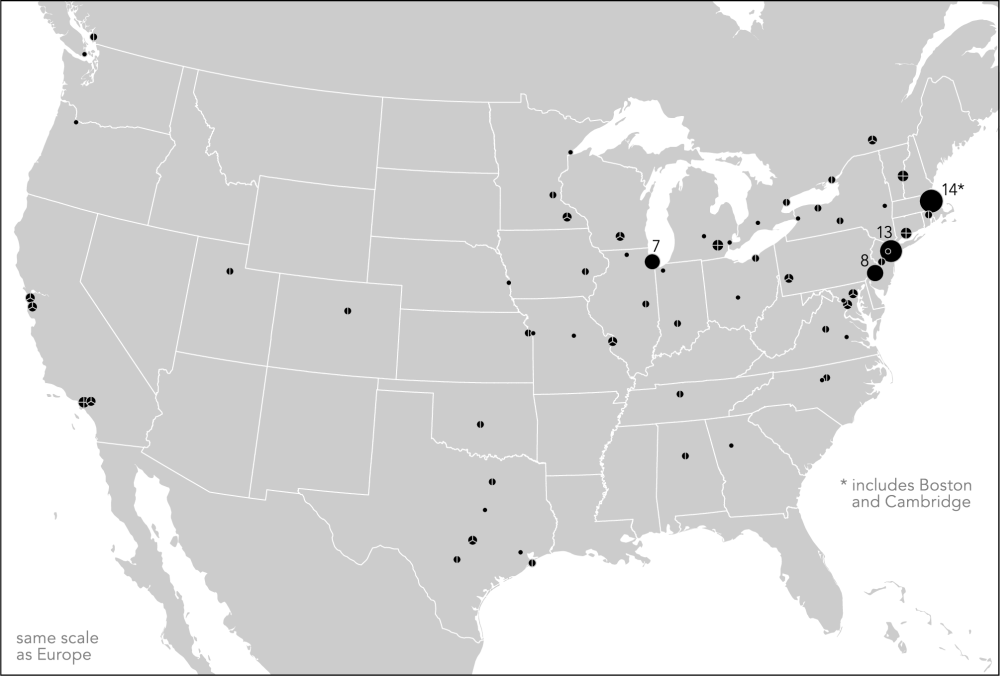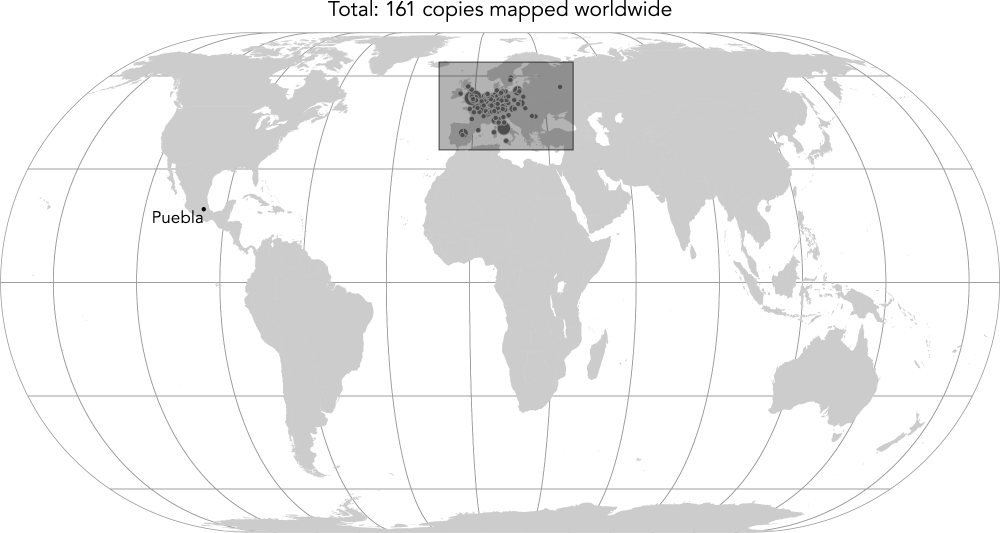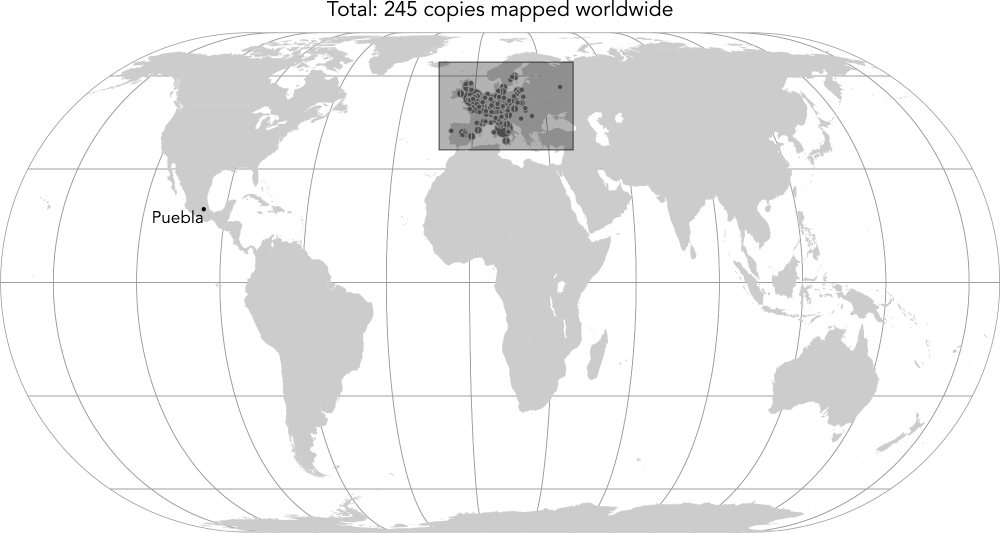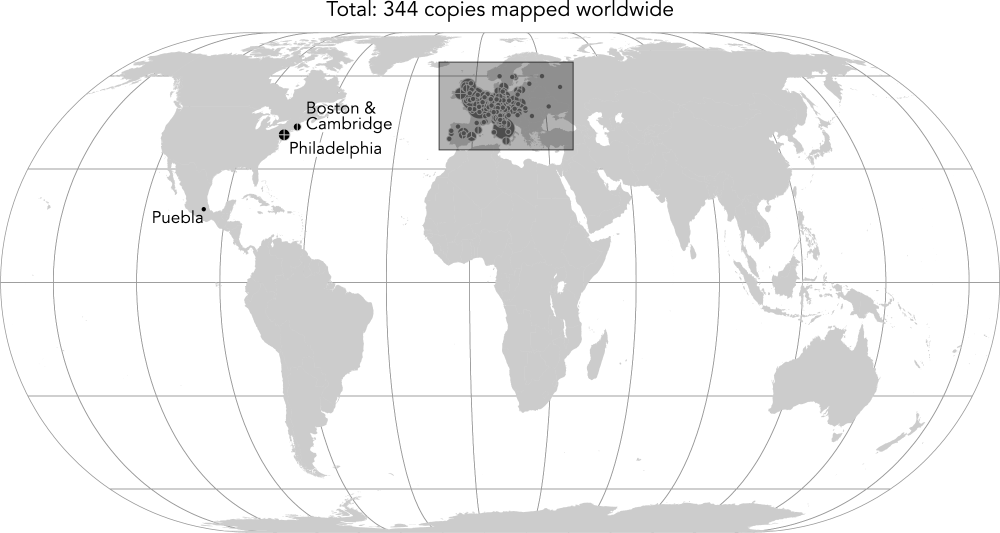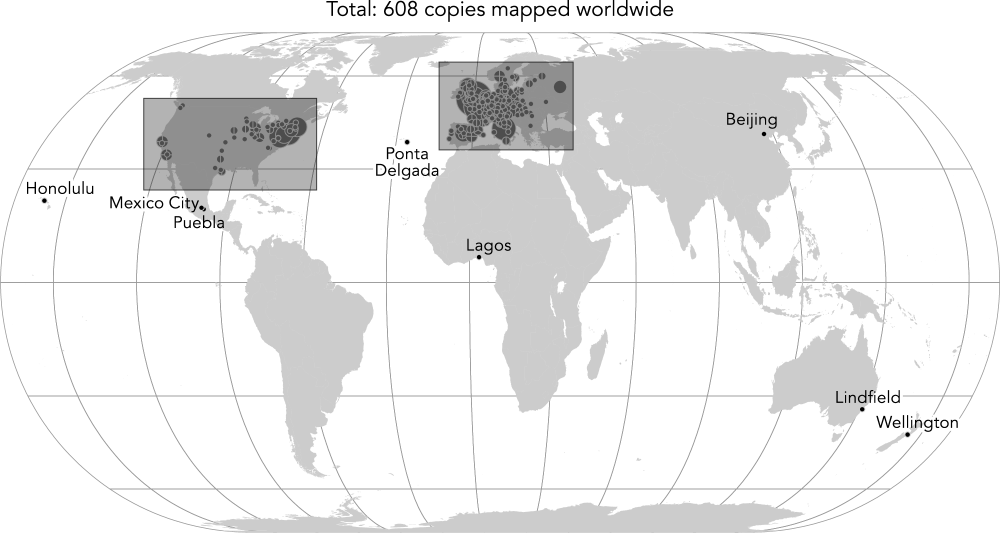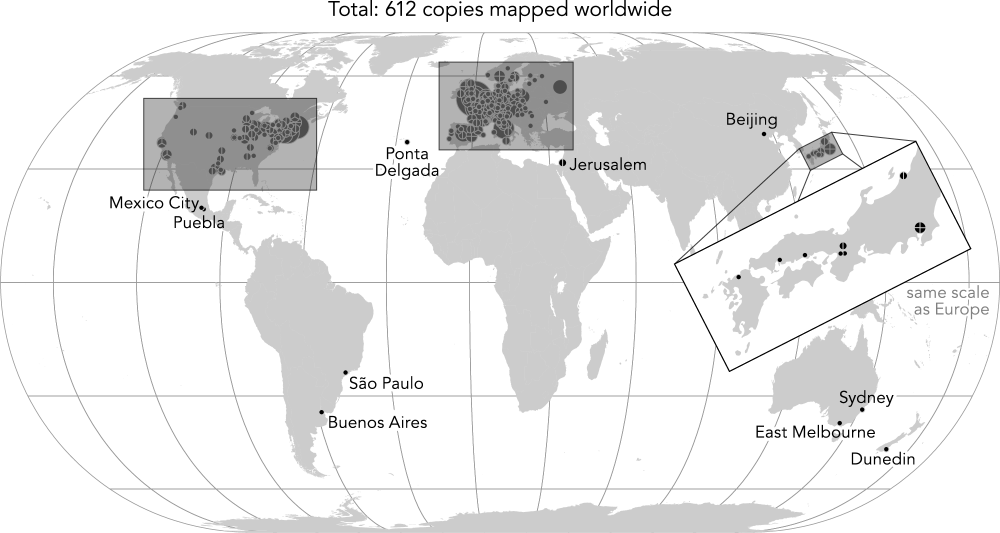OLD KNOWLEDGE
Dániel Margócsy and
Bill Rankin, 2017
YEAR TO SHOW
mouseover, or click to download:
1600 (PNG, 292 KB)
1700 (PNG, 297 KB)
1800 (PNG, 308 KB)
1900 (PNG, 331 KB)
2017 (PNG, 341 KB)
or download:
all maps (ZIP, 1.52 MB)
Andreas Vesalius's De humani corporis fabrica is the foundational work of the Western anatomical tradition. It offers a detailed description of the human body over several hundred pages and more than two hundred illustrations. It's also one of the most expensive rare books today — copies can sell for over $1,500,000. But this was exactly the point: the Fabrica was designed from the start to be a luxury item.
These maps show the movement of all known copies of the 1543 and 1555 editions, the two printings that Vesalius himself supervised. Copies have always tended to follow wealth and economic power. From their place of publication in Basel, they were first sold to wealthy customers across the Rhein river, the Low Countries, and the rich towns of late Renaissance Italy. With the rise of England as a global power, many copies ended up in London, Cambridge, and Oxford. In the late nineteenth century, the Fabrica became fashionable among American physicians, collectors, and businessmen, with copies slowly moving from East Coast cities to the industrial Midwest, the oil towns of the South, and California.
The larger question here is about how knowledge moves. Does it move where it's most likely to be put to good use — or where it looks best on the shelf? Can we tell the difference?
Read more on the sexual politics of the Fabrica in Slate — with two bonus charts!
Data from the Vesalius census by Dániel Margócsy, Mark Somos, and Stephen N. Joffe.

